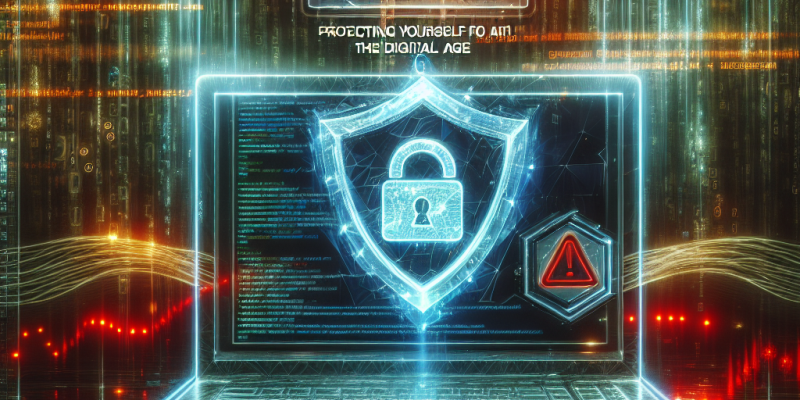Phishing Attacks Surge: Protecting Yourself in the Digital Age

In an era where digital communication has become the cornerstone of personal and professional interactions, the upsurge in phishing attacks poses a significant threat to individuals and organizations alike. As reliance on technology increases, so too does the sophistication of cybercriminals who seek to exploit vulnerabilities for financial gain or information theft. Understanding the nature of these scams and implementing proactive measures is essential for safeguarding yourself in this digital landscape.
Understanding Phishing Attacks
Phishing attacks are deceptive strategies employed by cybercriminals to trick individuals into divulging sensitive information, such as usernames, passwords, or credit card numbers. These attacks frequently manifest through emails, text messages, or fake websites that mimic legitimate sources. The name "phishing" is derived from the analogy of fishing, where scammers cast a wide net to lure unsuspecting victims.
In recent years, phishing techniques have become more advanced, incorporating tactics like social engineering, personalized messages, and even the use of artificial intelligence. For example, attackers may create emails that closely resemble those from trusted sources, such as your bank or a popular online retailer. With the rise of remote work and increased online transactions, the door has been opened wider for such attacks to penetrate both personal and corporate networks.
The Surge in Phishing Attacks
2023 has witnessed a dramatic spike in phishing incidents, thanks in part to growing cybersecurity gaps exacerbated by the pandemic and rapid technological advancements. According to cybersecurity experts, phishing attacks have increased by over 50% compared to previous years, marking an alarming trend that indicates cybercriminals are capitalizing on the chaos of the digital age.
Moreover, global events—from economic uncertainty to the rise of remote work—have created fertile ground for cybercriminals to exploit fears and uncertainties. For example, phishing emails related to COVID-19 vaccination efforts or financial assistance programs have gained prominence, leveraging urgency and confusion to trick individuals into compromising their personal information.
Signs of Phishing Attempts
To protect yourself from falling victim to phishing attacks, it’s crucial to be able to recognize the signs. Here are some common indicators that could signal a phishing attempt:
-
Suspicious Sender Email Address: Often, phishers will use email addresses that closely resemble legitimate ones but contain minor discrepancies.
-
Generic Greetings: Phishing messages often use vague greetings like "Dear Customer" instead of your name, which legitimate companies typically use.
-
Urgency or Threats: Phishing attempts often create a sense of urgency, encouraging you to act immediately, such as claiming your account will be suspended if action isn’t taken.
-
Unusual Links or Attachments: Be wary of clicking on links or downloading attachments from unknown sources. Hover over links before clicking to see their true destination.
- Spelling and Grammar Errors: Many phishing emails contain poor spelling, grammar mistakes, and awkward phrasing, which are often overlooked by sophisticated companies.
Protection Strategies
While the tactics used by cybercriminals are continually evolving, there are several strategies individuals and organizations can employ to protect themselves:
-
Enhance Awareness: Stay informed about the latest phishing techniques and trends. Cybersecurity awareness training can help employees recognize potential threats.
-
Use Multi-Factor Authentication (MFA): MFA adds an extra layer of security by requiring not just a password but also a second form of identification, making it significantly harder for attackers to gain access.
-
Regular Software Updates: Ensure that your operating system and applications are updated regularly. Many updates include security patches that can help protect against known vulnerabilities.
-
Install Security Software: Utilize reputable antivirus and anti-malware software to detect and block phishing attempts before they can do harm.
-
Verify Before Clicking: Always verify the authenticity of an email or message before clicking on links or providing personal information. If in doubt, go directly to the official website or contact the organization directly.
- Educate Others: Share knowledge about phishing with friends and family, creating a community of awareness that can better protect everyone.
Conclusion
As phishing attacks continue to surge, the threat they pose cannot be overstated. In a world where our personal and financial information is increasingly at risk, it is essential to remain vigilant and proactive. By understanding the tactics used by cybercriminals and actively implementing protective measures, you can significantly reduce your risk of falling victim to these malicious schemes. In the digital age, knowledge is not just power; it’s a critical defense against the persistent threat of phishing. Stay alert, stay informed, and protect yourself in an ever-evolving digital landscape.














